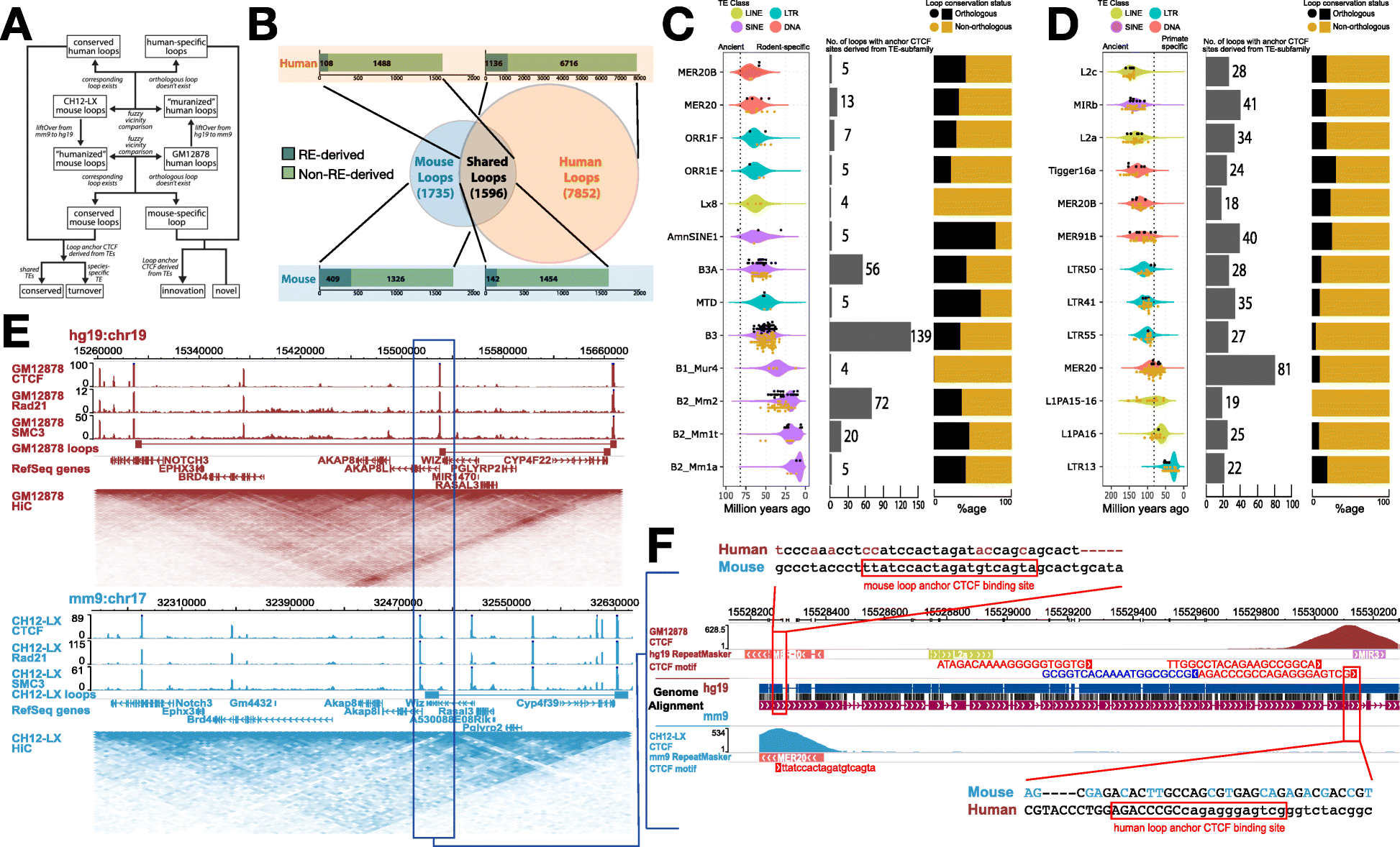Fig. 2
From: Co-opted transposons help perpetuate conserved higher-order chromosomal structures

Contribution of TEs to the conservation landscape of human and mouse loops. a Flowchart describing the methodology used to annotate loop orthology. b Venn diagram representing the various classes of chromatin loops based on their orthology and bar plots showing the contribution of REs to anchor CTCFs of each class of loops. c Age distribution and age of individual TEs that contribute loop anchor CTCF sites (black dots for orthologous loops; gold dots for non-orthologous loops) (left), total contribution to loop anchor CTCF sites (middle), distribution of orthologous and non-orthologous loops (right) derived from the top 13 TE subfamilies in mouse and d humans. Estimated primate/rodent divergence time (82 million years ago) is from Meredith et al. [47]. e Contact maps representing a conserved chromatin loop in a syntenic region between human and mouse. f A MER20 transposon insertion provides a redundant CTCF motif that helps in maintaining the conserved 3D structure in mouse via CTCF binding site turnover with remnants of the ancestral CTCF motif, well conserved in most non-rodent mammals (Additional file 1: Figure S2), still seen in the mouse genome
